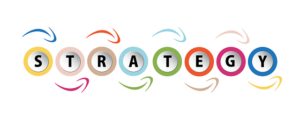Making a Murderer: 5 Ingredients for Creating a Killer Content Marketing Plan
This might appear a little dramatic to some but I believe that Dorothy was a serial killer. However, the story was represented in such a light so that no jury would dare to convict the little girl. What is your take on the story?
I was initially planning to call this blog The evil side of story telling, or Making a Murderer in Oz and talk a little more about a few examples of curious fairytales which would be terrifying if happened in real life [with real life applications]. I was also planning to focus a little more on the storytelling in Oz, aka Australia; however, realised that I must keep it broader as my readers arrive here from all over the world.
Moreover, I was writing this blog over a few windy and very wet days in Sydney which, of course, continued to be a hot topic in each office nation-wide. Australia is a small country; and we love talking about weather here – nothing else, really, happens. And so I got into a conversation with a fellow writer, discussing how the current weather reminded me of Dorothy (from The Wizard of Oz) who was picked up by a strong wind and taken to Oz. My friend rightfully noticed: ‘Ahhh, Dorothy. The story of a little girl who traveled to a magical world and killed the first person she met for a pair of shoes‘.
This is how the image above was born
Content marketing, or storytelling, is a very powerful tool. This is why I’ve always been fascinated by writers and journalists – they create stories bending them whichever way and the rest of the world followed. Telling a story is a powerful gift. Unfortunately, in the modern noisy world of content marketing, everyone is trying to tell a story, making the whole concept weak. Thus, the evil side of story telling.
Let’s dive into how to make a killer content marketing plan and leave poor old witches alone.
Marketing has undergone a sea-change and what worked yesterday might not be so inventive or useful today. For instance, Elite Daily Millennial Consumer Study 2015 reveals that ‘only one in 100 millennials say the most compelling advertisement would persuade them to trust the brand’. Modern customers can smell overtly promotional and sale-sy tactics from far away. And, that’s exactly why you need to embrace content marketing — a method that focuses on adding value to customers as a way to generate interest, leads, sales, and greater revenue. Side note, I am not re-inventing anything or suggesting a brand new techniques – everything has been discovered already – I am merely helping you remember what you’ve have forgotten.
Whether you’ve been trudging along with less-than-effective content marketing or you’re new to it, the roots of effective content marketing planning is in a strong and well-laid out content strategy. Surprise!
But what makes a good content marketing strategy? Well, there are nuts and bolts here and there but basically, here are five essential ingredients for a successful content marketing plan that are used by successful marketers and business owners. And I am not re-inventing anything but sharing the basics you ought to know already so make notes, if you don’t yet.
-
Table of Contents
Document your strategy
According to CMI’s research, successful content marketers not only have a plan, they have a documented content strategy.
And it makes sense because when you put your content strategy in writing you’re aware of all the moving parts and have a better understanding of the whos, whats, whens, and whys of your content plan. Moreover, I am sure you know, there are good days and there are bad days. During bad days, we often make wrong decisions or feeling stuck – reflect on your written down strategy and work off something more concrete than just your memory. Finally, at some point in your work, if not already, you will expand and you will acquire a team – they cannot access your mind but they can read your detailed strategy put on a piece of paper. Or recorded digitally.
-
Engage people to create a steady flow of content
High quality content plus consistency is the success formula of content marketing.
While this can be challenging to achieve, you can outsource or crowdsource to lighten the burden of content production and let your in-house resource focus on distributing and promoting your content on all viable platforms. Sometimes it is possible to engage outsides and offer your platform to them – yes, I mean guest blogging. Make sure you have a nice and clear set of house rules and offer guest blogging away – this will offer diversity of opinions which can be beneficial in your venture.
Similarly to ‘starting new life on Monday’ or starting a new diet regime, we often get excited about the new beginnings; however a few months down the track things start declining. You cannot stop your promised engagement on day three because you are having a flu or simply not feeling like it anymore. If you are worried about falling through, make sure you follow my tip #1 [Document your strategy] and plan for the force majeure.
-
Publish content regularly
 Publish your content on various platforms on a regular basis to stay on top of your audience’s mind.
Publish your content on various platforms on a regular basis to stay on top of your audience’s mind.
When you have a business to run, your content publication may take a backseat and your one-man efforts may fall short. This is why it’s important to have a reliable team to manage your content production and distribution. That way you can maintain a regular schedule.
Similarly to my tip#2, publishing your content as regular as you promised is crucial. Publishing on varies platforms can increase your chance of being noticed; however do not jump on everything – refer back to tip#1 and strategically select your tools [platforms].
-
Create content for customers at every stage of buyer journey
Not everyone reading your content is ready to make a purchase; some of them might have just come to know about you (initial stage), some might be in a research mode (middle stage), while some might be convinced that your brand is the best (final purchase stage).
So you need to create content for people at every stage of the purchase cycle and encourage them to move on to the next stage. This is particularly relevant when it comes to your newsletters. Marketing nurturing requires your content to be flexible to service the correct audience. Use sales funnels and CRMs and design content for each step of your customers’ sales travel.
-
Track efforts and measure ROI
Measuring your work is understood and appreciated by many content marketing users so I don’t need to dwell on it for too long.
All I want to mention is that your measurement will rely a lot on your strategy where you outline what you want to measure, the time frames, etc. Moreover, you will most likely fail when starting up because this is how you learn what works and what doesn’t. Each industry is very unique and although we can copy other people’s approaches, they are never going to be 100% bullet proof.
For content marketing, it’s a long season. There are, and should be, many chances to fail — as long as we fail quickly, learn, and adapt to the new surroundings.
It is important to understand what you want to measure and over which period of time. If you are blogging, you will be closely watching your website numbers including reach, bounce rate, etc. If your marketing tools is videos then YouTube views and following will come into place. Tracking your efforts will allow you to understand what works for your particular business.
About the author: Anna Kochetkova
 Anna Kochetkova is a journalist by trade and a marketer by accident. She is a founder of Content Queen, creative platform for small businesses to learn about content marketing, storytelling, blogging and other wars. A Russian born Australian, she is known for being a creative strategist, exceptional writer and a marketing expert. Anna is also a senior manager at Yours Socially, a social media agency for busy entrepreneurs. She loves all social and carries a selfie stick in her purse.
Anna Kochetkova is a journalist by trade and a marketer by accident. She is a founder of Content Queen, creative platform for small businesses to learn about content marketing, storytelling, blogging and other wars. A Russian born Australian, she is known for being a creative strategist, exceptional writer and a marketing expert. Anna is also a senior manager at Yours Socially, a social media agency for busy entrepreneurs. She loves all social and carries a selfie stick in her purse.




